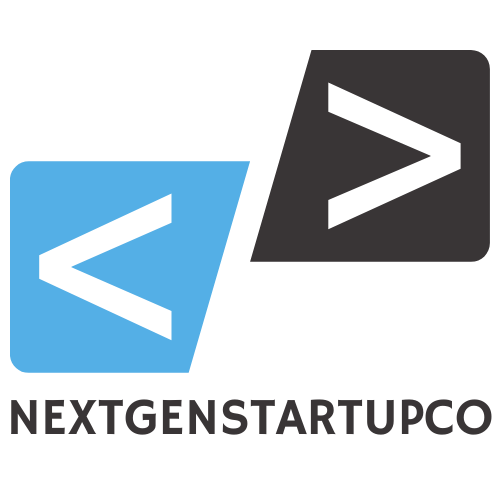In a world where software eats the world, SaaS subscriptions are the buffet everyone’s raving about. Gone are the days of hefty upfront costs and complicated installations. Now, businesses can feast on cloud-based solutions that are just a click away. It’s like having a personal chef for your tech needs, serving up exactly what you want, when you want it.
But let’s face it, navigating the vast buffet of SaaS options can feel like trying to choose between a thousand flavors of ice cream. Do you go for the classic vanilla or the adventurous jalapeño popper? Each subscription promises to be the best thing since sliced bread, making it tough to pick the right one. Fear not! This guide will help demystify the SaaS subscription landscape, ensuring you make the smartest choice without breaking a sweat—or the bank.
Table of Contents
ToggleUnderstanding SaaS Subscription
SaaS subscriptions revolutionize how businesses access software. They offer flexibility and efficiency in software usage without hefty upfront expenses.
Definition of SaaS
Software as a Service (SaaS) delivers software applications over the internet. Users access these applications via web browsers, eliminating the need for installation on local devices. This model allows companies to use software on a subscription basis, optimizing costs and resource allocation. SaaS providers manage maintenance, security, and updates, ensuring users always work with the latest version without additional fees. This framework benefits organizations seeking scalable solutions tailored to growth.
Key Characteristics
SaaS possesses several distinguishing characteristics that make it appealing. First, it operates on a subscription basis, offering monthly or annual payments. Next, accessibility from any internet-connected device enhances usability. Also, updates and maintenance occur automatically, relieving users of IT burdens. Many SaaS applications incorporate multi-tenancy, allowing multiple customers to share resources efficiently. Finally, built-in analytics and reporting features enable users to gain insights into usage patterns and performance quickly. Each of these attributes contributes to SaaS’s growing popularity across diverse industries.
Benefits of SaaS Subscription


SaaS subscriptions offer numerous advantages for businesses seeking efficient software solutions. Here are two key benefits:
Cost-Effectiveness
Cost-effectiveness stands out as a primary benefit of SaaS subscriptions. Businesses avoid substantial upfront costs associated with traditional software, opting for a predictable monthly fee instead. This model enables budget management while ensuring access to necessary tools. Lower hardware expenses arise since software resides in the cloud. Companies eliminate the need for extensive IT infrastructure, reducing ongoing maintenance costs. SaaS also ensures that users access the latest versions without additional fees, enhancing value over time. Overall, the subscription model paves the way for better financial resource allocation.
Scalability
Scalability characterizes the SaaS subscription model, allowing businesses to adapt their software usage based on current needs. Growing companies can easily increase their subscription plans as they expand, ensuring access to additional features. This flexibility supports diverse team sizes and varying project requirements. Seasonal businesses can scale services up or down, responding efficiently to market demands. It also facilitates onboarding new employees, as access to required software happens rapidly. Organizations can adjust usage without complex installations or long-term commitments, promoting overall operational efficiency.
Choosing the Right SaaS Subscription
Selecting the appropriate SaaS subscription requires careful consideration of various factors. Businesses need to evaluate unique needs, usage patterns, and budget constraints.
Factors to Consider
Pricing structures matter significantly when choosing a SaaS solution. Compare monthly versus annual payment options to identify the most economical choice. Features offered by different providers also impact decisions. Prioritize essential functionalities that align with business goals. Scalability is another vital aspect. Ensure the SaaS solution can grow alongside the business for future adaptability. Customer support quality varies among providers; therefore, assess available support channels and response times. Compliance with industry regulations might also be necessary, depending on the sector. Conduct thorough research to ensure chosen software aligns with these requirements.
Popular SaaS Providers
Leading SaaS providers include industry giants like Salesforce, Microsoft 365, and Slack. Salesforce offers comprehensive CRM solutions for sales and customer engagement. Microsoft 365 provides a suite of productivity tools that enhance collaboration. Slack strengthens team communication through organized channels and integrations. Zoom stands out for video conferencing and remote collaboration tools. Dropbox facilitates file storage and sharing seamlessly in the cloud. Each provider offers distinct advantages, making it crucial to identify which aligns best with organizational goals. Exploring customer reviews and case studies aids in making informed choices.
Managing SaaS Subscriptions
Effective management of SaaS subscriptions helps businesses stay organized and maintain cost efficiency. It’s important to focus on monitoring usage and budgeting for subscriptions to maximize value.
Monitoring Usage
Tracking usage of SaaS applications ensures that the subscriptions align with actual needs. Companies can analyze user engagement and identify underutilized services, enabling them to adjust plans accordingly. Understanding utilization patterns aids in decision-making regarding renewals or upgrades. Tools designed for usage analytics can provide insights into team performance or software efficiency. Regular reviews of these metrics help maintain an optimal cost-benefit balance.
Budgeting for Subscriptions
Establishing a budget for SaaS subscriptions fosters financial control. Setting a clear monthly or annual budget helps in managing expense forecasts. Businesses should account for varying subscription costs and potential add-ons when planning. Identifying which features are essential assists in avoiding unnecessary expenses. Companies should also consider future growth to ensure the budget can accommodate scaling needs. Evaluating the pricing structures of different providers helps in selecting the most cost-effective solutions.



